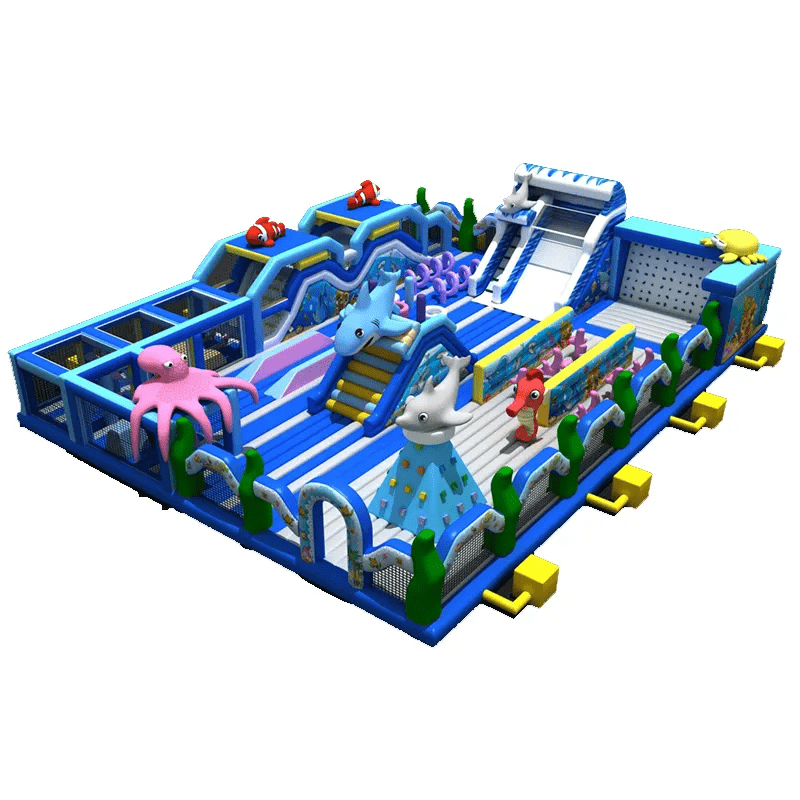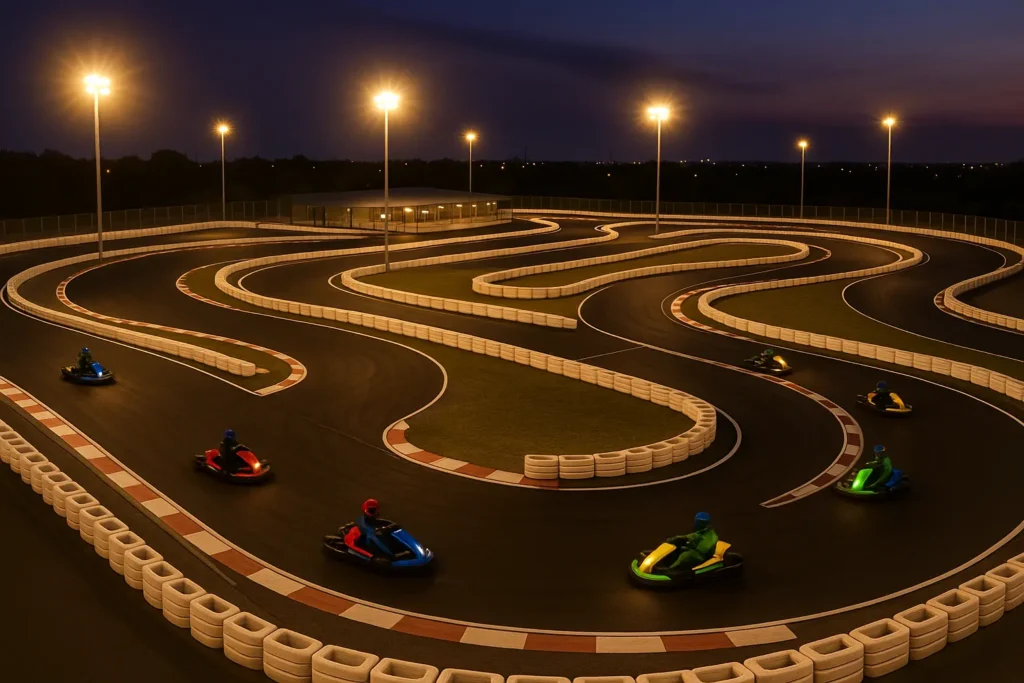Trends and New Technologies in the Inflatable Playground Market
In recent years, the inflatable playground market has undergone significant changes and innovations within the entertainment industry. Inflatable playgrounds have evolved beyond simple inflatable castles and slides, becoming diverse and creatively enriched entertainment facilities, driven by cutting-edge technologies. In this blog post, we will explore the current trends in the inflatable playground market and the new technologies that are shaping this industry.
Growth and Prospects of the Inflatable Playground Market
The inflatable playground market has experienced robust growth in recent years, attributed to several key factors:
- Increased Demand for Family Entertainment: People are placing a growing emphasis on family entertainment, and inflatable playgrounds offer a safe and enjoyable option suitable for all age groups.
- Children’s Parties and Events: Inflatable playgrounds are becoming increasingly popular for children’s birthday parties, school events, and community gatherings, serving as a key attraction for families and kids.
- Increased Business Investments: More businesses recognize inflatable playgrounds as attractive investment opportunities, leading to the establishment of inflatable playground venues.
- Introduction of Innovative Products: Manufacturers continue to introduce novel and creatively rich inflatable playground products, attracting a broader customer base.
Impact of New Technologies
New technologies have made a profound impact on the inflatable playground industry, altering product design, operations, and user experiences. Here are some of the most significant technology trends:
- Digital Printing and Custom Design: Digital printing technology allows manufacturers to print intricate patterns, images, and logos on inflatable playgrounds. This makes customization easier, enabling businesses to create personalized inflatable playgrounds to meet customer demands.
- Smart Monitoring and Management Systems: Many inflatable playgrounds now come equipped with smart monitoring systems to track real-time usage and safety conditions. These systems enhance operational efficiency while minimizing potential risks.
- Virtual Reality (VR) and Augmented Reality (AR): Some inflatable playgrounds are incorporating virtual reality and augmented reality technologies, providing users with entirely new interactive experiences. This includes using VR headsets or AR applications within games and activities.
- Sustainability and Environmental Concerns: Manufacturers are increasingly focusing on the sustainability of inflatable playgrounds, using eco-friendly materials and production methods. This reflects consumers’ growing interest in sustainability.
Emerging Market Segments
How to apply your inflatable projects?Inflatable playgrounds are no longer confined to just family entertainment and children’s parties. They are making their mark in various market segments:
- Parks and Resorts: Some resorts and leisure parks are introducing inflatable playgrounds as an additional entertainment option for visitors.
- Team Building and Training: Inflatable playgrounds are also being used for team-building and training activities, providing opportunities for teamwork and challenges.
- Advertising and Brand Promotion: Businesses are beginning to utilize inflatable playgrounds as tools for advertising and brand promotion, attracting more attention and visibility.
Challenges Faced
While the inflatable playground market offers numerous opportunities, it also presents some challenges. Some of these challenges include:
- Safety and Regulations: As the market grows, ensuring safety and compliance with regulations becomes increasingly crucial and complex.
- Intense Competition: With a rising number of competitors in the market, manufacturers must continually innovate to maintain competitiveness.
- Sustainability Pressure: Consumer concern for sustainability is growing, and manufacturers need to take steps to reduce environmental impacts.
Conclusion
The inflatable playground market is in a phase of rapid growth and evolution, with new technologies and innovations constantly propelling the industry forward. With emerging applications and technological advancements, inflatable playgrounds will continue to be a vital component of family entertainment, business investments, and innovative leisure. However, safety, sustainability, and regulatory compliance remain focal points, demanding close attention from manufacturers and operators alike.




